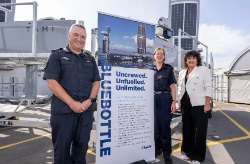GM Crop Failure a Cautionary Warning For Farmers
GM Crop Failure Offers a Cautionary Warning For Farmers
New Zealand farmers must learn from the experience of farmers overseas and resist pressure to weaken regulations around the safety of genetically engineered organisms (GEO’s), from groups promoting their release.
Thousands of people are now facing famine after a massive crop failure in South Africa. The Times of Zambia has just reported that three types of Monsanto GE corn has failed to pollinate affecting 82,000 hectares (202 000 acres) of vital food production land.
Maize is a staple food of Africa and farmers regularly fight drought but never before have their plants failed to be pollinated. Such a catastrophic event is unheard of and highlights the dangers that have been forecast by scientists about the risks to food security posed by GEO’s.
GE crops have been aggressively marketed in developing countries including South Africa, and portrayed by agribusiness as the solution to the Worlds' food security.
But New Zealand also has a trail of GEO failures, animal deformities, trial-breaches and a clear majority of consumers who do not want it.
Now New Zealand is being put under severe pressure to further relax its regulatory rules.
The Government has sought comment on changes to the Resource Management Act (RMA) including the removal of the public voice and environmental protections.
This puts New Zealand farmers at risk. If these changes are implemented it will mean that local regions will have a struggle to voice concerns on developments and protect hard won environmental safeguards from centralized Government dictates around National Standards, including for GEO regulation. Many farmers and businesses rely on a GE Free production system and these voices must be heard.
The RMA changes coincide with The National Business review featuring Life Sciences Network lobbyist William Rolleston. It reports that Rolleston felt embarrassed to be a New Zealander because of the stringent GEO regulations that are in place. He said he was “laughed at in disbelief” at the New Zealand regulations and that they stifled thought.
Unfortunately his vision very much demands a reduction in regulatory standards that have helped protect New Zealand from GMO’s to a significant extent.
“The trough of promises put forward by GE Biotechnology Businesses is just a mirage,” says Claire Bleakley of GE Free NZ in food and environment.
“Proper research costs money and the risk to New Zealand is that Life Science Network businesses see Regulations requiring GE scientific research as costly time wasting and an obstacle to quick-term profits”.
It is essential that communities have a voice over how to protect their local economy from the ravages and dangers of GEO’s. The Auckland and Northland District Councils are to be congratulated in seeking to consult with ratepayers over the use of GEO’s.
ENDS:
Local authorities consult ratepayers on GMO land use, April 11th 2009, www.gefreenorthland.org.nz
Monsanto GM-corn harvest fails massively in South Africa, March 29th 2009, Adriana Stuijt http://www.digitaljournal.com/article/270101
GM Maize fails to produce, The Times (Zambia), Bobby Jordan, 22nd March 2009 http://www.thetimes.co.za/PrintEdition/Article.aspx?id=964062
Over Regulation stifling Innovation, Mark Peart, National Business Review, March 20th 2009.
In the
last five years many regulations have been compromised - the
GMO tree trial by Scion was found with holes in its
perimeter fence, there has been the illegal flowering of GMO
brassica plants at another secret location and GM onions
were found outside the containment fence. There is also
continued concern about contaminated land used in a GE
tamarillo trial, and the destroyed flock of 3000 GE sheep
undertaken by a Scottish company. To date there have been
few scientific publications reporting on the safety and
performance of any of the New Zealand GE trials that have
failed or still continue.


 Gordon Campbell: On The Left’s Electability Crisis, And The Abundance Ecotopia
Gordon Campbell: On The Left’s Electability Crisis, And The Abundance Ecotopia NZ Government: Stay Safe On Our Roads This Easter
NZ Government: Stay Safe On Our Roads This Easter YWCA: Global Push Back Against Gender Equality A Growing Crisis In Aotearoa
YWCA: Global Push Back Against Gender Equality A Growing Crisis In Aotearoa Te Pāti Māori: Ngarewa-Packer - Fast-Tracking Seabed Mining Ignores Māori Opposition And Environmental Precedent
Te Pāti Māori: Ngarewa-Packer - Fast-Tracking Seabed Mining Ignores Māori Opposition And Environmental Precedent New Zealand Defence Force: Defence And Customs Strengthen Maritime Security With Uncrewed Surface Vessels
New Zealand Defence Force: Defence And Customs Strengthen Maritime Security With Uncrewed Surface Vessels SPCA: Huge Win With New Dog Tethering Regulations
SPCA: Huge Win With New Dog Tethering Regulations Community Housing Aotearoa: Ngā Wharerau o Aotearoa Says New Partnership Model Helping Ensure Right To A Decent Home Is Realised
Community Housing Aotearoa: Ngā Wharerau o Aotearoa Says New Partnership Model Helping Ensure Right To A Decent Home Is Realised


